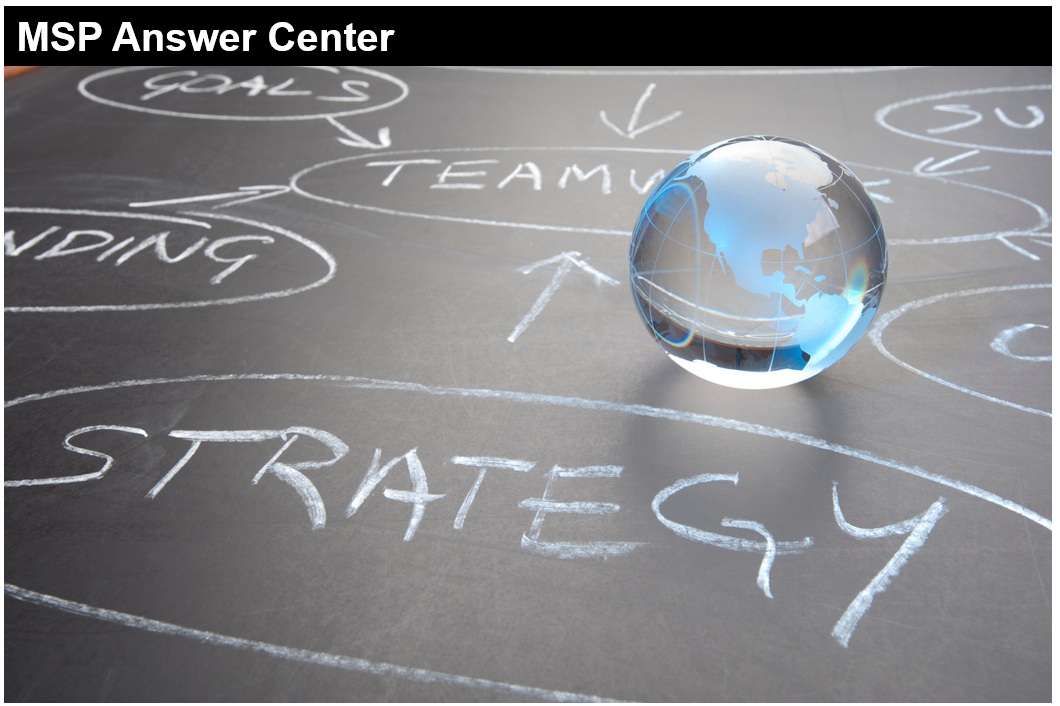THE “DIGITAL TRANSFORMATION of the pandemic years” may sound like a chapter in a dystopian young adults novel, but in fact it’s a cloud computing reality.
Work-from-home trends coupled with rising security concerns and new solutions have truly accelerated the average SMB to embrace cloud-based environments. The result is an emerging post-endpoint managed services landscape that channel pros must navigate to avoid commoditization and obsolescence.
“What’s funny is, ‘the cloud is coming’ was our worry 10 years ago,” says Lisa Niekamp-Urwin, president and CEO of Tomorrow’s Technology Today, a managed IT services company in St. Henry, Ohio. “But now that it’s here, it’s really no different than it was—it’s still about change.”
Indeed, says industry voice Dave Sobel, podcaster and owner of MSP Radio, “We’re in a field that’s all about change. Digital transformation isn’t a one-time thing; it’s an all-the-time thing. So, if I’m going to be relevant for another 20 to 30 years, I have to figure out where I’m going to go and what I’m going to sell.”
To stay relevant in this new post-endpoint world, MSPs will need to shift their focus from managing devices to delivering strategic, consultative services aimed at helping businesses capitalize on the power of cloud-based solutions.
The COVID Accelerant
“Cloud computing” is nearly as old as the internet itself. As far back as the late 1990s, Silicon Valley venture capitalists entertained visions of application services handling all aspects of business. By the early 2000s, server virtualization was here. In 2010, the talk was “cloud, cloud, cloud.”
So why is it we’re hearing channel experts warn of “digital transformation” as if it’s a looming hurricane soon to make landfall? After all, this has been circling and developing for decades, hasn’t it?
“It’s the COVID accelerant,” explains Sobel. “It’s a bunch of trends moving faster … We’re now in the ‘end game’ of that familiar cloud story.”
Colin McMahon, associate director of industry analyst firm Keypoint Intelligence, agrees with Sobel, and they both see one trend in particular, the mammoth, worldwide “work-from-home” shift, as irreversible. “People like working from home, and they don’t want to go back,” notes McMahon.
At one point during the first year of the COVID-19 pandemic, 71% of workers conducted their jobs from home, according to an October 2020 Pew Research Center survey. That’s a mind-blowing number of individuals quickly relying on home-based technologies, with organizations of all sizes moving to secure cloud-based services to accommodate that workforce.
The cloud movement looks to continue apace too, with Gartner predicting that 85% of businesses and organizations will employ cloud-first IT strategies by 2025, and 95% of digital workloads will be deployed on cloud-native platforms.
Even before the “COVID accelerant” pushed SMBs to the cloud, however, channel pros were debating the long-term viability of a business model that emphasized device management. At industry trade shows as far back as 2017 and 2018, Juan Fernandez recalls positing to his peers, “Let’s stop having the hardware discussions!” At that time, according to Fernandez, an industry veteran and vice chair of CompTIA’s Channel Development Advisory Council, it was clear the future model for managed service providers needed to morph toward cloud-focused consultative services.
Fernandez’ point was this: Desktop applications have become relatively self-sufficient. Automation and ease of use have removed the complexity of device management. By not focusing MSPs’ attention on the cloud and business operations advising, Fernandez felt trade education was doing them a disservice.
And that was four or five years ago.
“Gone are the days of the device,” Fernandez says today. “We don’t need to manually configure end-user profiles and application settings. I don’t need anyone to remotely manage anything I’m doing. The ‘command and control’ situation we had for years is not what people want anymore.”
Sobel, for his part, uses Apple products to illustrate the same message. He points to the recently launched Apple Business Essentials, a subscription-based service for SMBs that includes device management, support, and storage. “You can get a total Apple shop,” he says, “plus a 24/7 service desk.”
These trends toward self-sufficiency and consolidation among endpoint devices are only going to accelerate, which will threaten those MSPs relying on outdated service models. Sobel believes the big-name vendors will increasingly go more direct to market too, as their sheer size enables them to withstand the financial liabilities that some of their less resilient competitors—and partners—cannot.
One such liability is a security breach, he notes. “The cash cushion required to survive a data breach has gotten significant. If you’re a small company, you might not make payroll if you need to pay a ransom. You might not get insurance. You might get sued or settle to extinction.”
The Evolution to MSP 7.0
MSPs work in an industry that’s all about constant upgrades—not just in products, but in know-how and personal adaptability. “This is an industry of ‘upskill,'” Sobel notes. “It’s not assumed that your skills will last forever. You actually have to understand how technologies are used and the new ways things work.”
Using an upgrade analogy, Fernandez calls the future services model MSP 7.0. Those currently operating at versions 5 and 6 will be well positioned to evolve, he says. The MSP 5.0, Fernandez speculates, is “almost an MRR advisory company and doesn’t really do anything on site. They have what’s needed in place to move ahead.”
MSPs that are further downstream, however, will find it difficult to survive. “MSPs 0.1 through 4.0 who are facilitating tickets and working break-fix projects have to understand they’re going to struggle with this,” he stresses. “You’re super far behind.”
For those who can evolve to “MSP 7.0,” however, as Fernandez imagines, the role will become more or less a virtual CIO, providing advisory services to SMBs and orchestrating secure and efficient business solutions that improve customer service and optimize workflows. He describes this as “business operations as a service.”
“The digital transformation means there is no technology that functions individually,” says McMahon. “It’s all part of a whole ecosystem, and each solution needs to fit in that workflow.”
Sobel, for his part, envisions a “consultancy renaissance” in which SMBs hire business analysts more often than technicians. He likens the new post-endpoint managed services model to professional services professions such as financial planners and accountants—all of whom, he points out, “are making chunks of money.”
Boutique IT consultancies, Sobel predicts, will thrive by “teaching people to be effective with the technology.”
Smart, savvy SMBs that have gone all-in with cloud no longer need traditional MSP services, Sobel stresses. “You just need a really good consultant who can tie your cloud systems together and keep them protected and optimized.”
The Transition Starts with Opportunity
Transitioning to the post-endpoint era starts with identifying opportunities to help SMBs “keep moving and operating,” Fernandez says.
Integrations are one area of need, suggests Sobel. “My financial system needs to talk to my CRM and my website and my sales funnel, and I need to know that I’ve protected my crown jewels. I need someone to help me with that.”
Niekamp-Urwin says Tomorrow’s Technology Today found a lot of opportunity during the COVID-19 pandemic around SharePoint and OneDrive. “We had been telling clients they needed to think about SharePoint and OneDrive, and many were thinking they didn’t need it,” she recalls. “But as 2020 started to develop, it really started to change their perspective.”
SMB clients sometimes need a push, she adds. “They don’t know what they don’t know,” Niekamp-Urwin points out. “So, dig a little deeper. Think about the Microsoft cloud and all the things you can get into with your clients, all the things that could connect to that data.”
Fernandez suggests looking to partnerships too. “Develop a partnership bucket and figure out who’s out there. What about financial? Insurance capabilities? Legal opportunities? Intuit has a fresh, new program with multitenant solutions.” He adds, “I just saw a legal firm started a managed service by teaming up with cybersecurity companies to offer penetration testing and cybersecurity risk assessments.”
Niekamp-Urwin sums up: “Just get to their conference room table and be their strategic partner.”
The MSP of Tomorrow
MSPs who successfully shift from endpoint management to business operations consulting will ensure a growing role in the channel. As McMahon explains, “Life as we know it is changing. Anything we can do to reduce costs, better automate, or reduce manual input times for an employee or business is increasingly valuable.”
While it may seem daunting for some MSPs to adjust to a consultative service model, channel pros like Niekamp-Urwin are encouraging. “Your value is more than your endpoint service,” she tells her channel colleagues. “The way you make your client understand why they need something, the way you make things conceptually digestible—you don’t just get that anywhere. You’re more than that. You’re a trusted IT adviser who’s part of the business strategy.”
“MSPs are all service businesses anyway,” Sobel concludes. “We’re not really disrupting anything with these predictions. Ask yourself, ‘Which is more viable: selling monthly contracts on endpoint products or upping your game to become a better consultant?'”
Postscript: Adapt or Fade to Black
Industry analysts, trade show panelists, and channel trainers have all used countless metaphors in their attempts to inspire MSPs to adopt a service-oriented approach that moves beyond the endpoint device.
“It’s death by a thousand cuts,” Sobel says of the unfolding cloud-first reality, hoping his podcast listeners take heed.
“It’s the horse and buggy compared to the autonomous driving car,” says Fernandez of the device-first versus cloud-first mentality. “It’s grabbing the broom to go to aisle 4,” he says, mocking the break-fix model.
No matter how you describe it, device management “is a bad long-term plan, and anyone focusing on break-fix or managed services really needs to think about their long-term plan,” says Fernandez. Yet some endpoint-centric MSPs just won’t adapt, fearing the “sunken costs” of past investments or viewing a major change in their current business model as too risky or even potentially squandering what they’ve built so far.
Many MSPs kept their heads down over the years, busying themselves with the crucial task of keeping their customers’ operations running. “But during that time, solutions and security just moved way faster than we realized,” Fernandez laments. “Now we’re looking at the ecosystem wondering why we’re still on-prem. We face a steep hill to climb.”
“I get it; it’s hard,” concedes Sobel. “You’re looking at the difficult process of changing your service offerings to meet the needs of the future. And if you’re a 60-year-old business owner, maybe you don’t do this. Maybe you just ride it out until you can sell.”
But there’s no growth potential for MSPs that don’t adapt, says Fernandez, and as a result, “We see a lot of people exiting [the channel].”
To Niekamp-Urwin, the MSPs clinging to endpoint management are not just slowly sinking ships, but they’re also major obstacles for a channel that’s quickly moving around them.
“Nobody benefits from the race to the bottom,” she chides. “The more you’re undercutting me, the worse we’re all getting.”
Image: iStock















